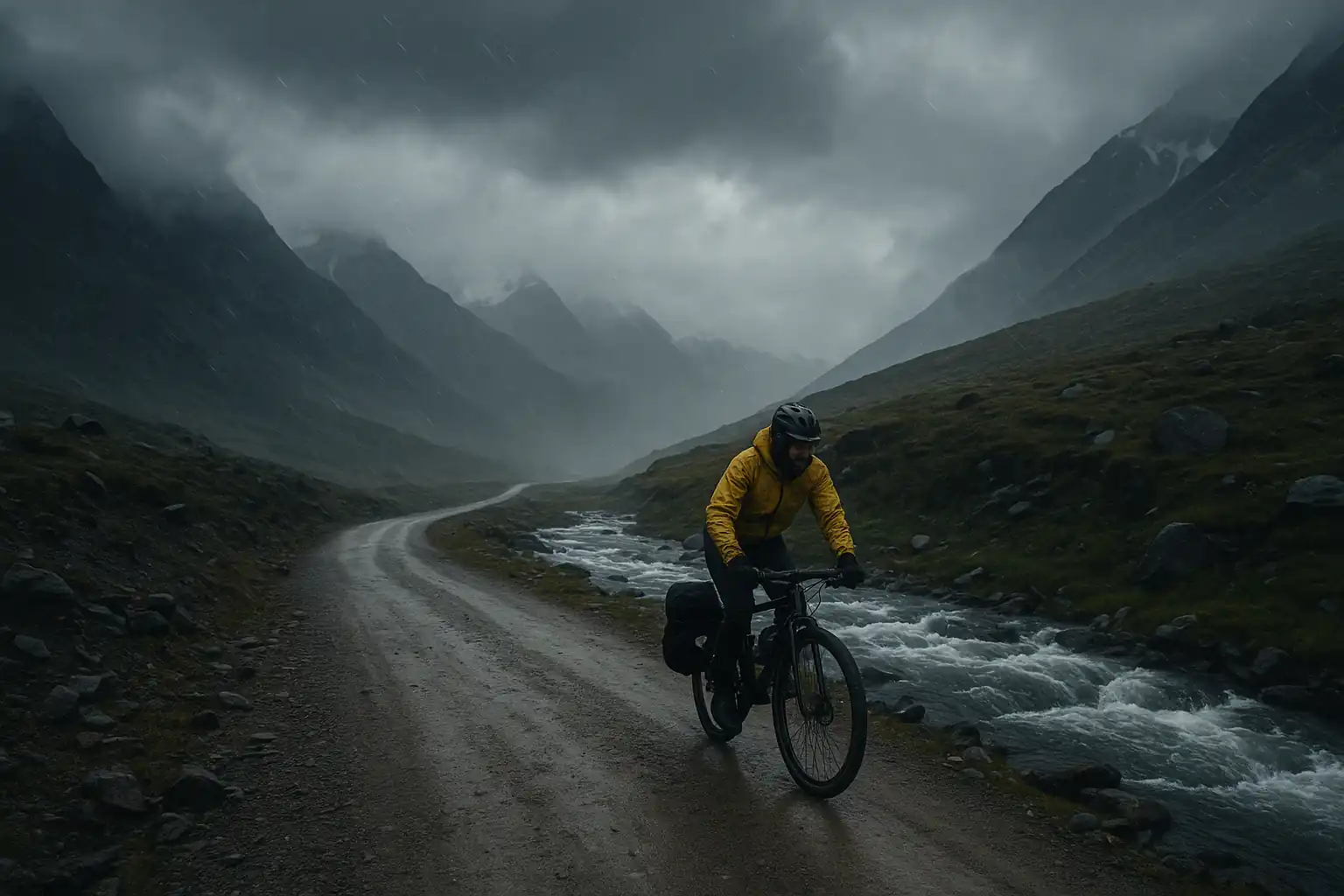We worry about the wrong things.
The bear on the trail.
The stranger at the dhaba.
The stray dog with the yellow eyes.
But what we should fear — quietly, humbly — is the mountain itself.
Not the rocks, not the peaks.
But the things you don’t see coming.
The weather.
The water.
And your own body betraying you above 3,000 meters.
It Doesn’t Look Like Danger
The mountain doesn’t announce its kill list.
It just shifts, silently.
You’ll be riding. Maybe laughing.
A little drizzle, a little wind.
A stream bubbling happily beside your tent.
Then — too late —
You’re soaked. Shivering. Dizzy.
Your head pounds. Your breath shortens.
The stream is now a river.
That’s how the mountain kills:
Without warning. Without mercy.
AMS: When Air Turns Against You
Acute Mountain Sickness (AMS) doesn’t punch. It creeps.
A dull headache at first. Then fatigue.
You tell yourself you just need rest.
But rest doesn’t fix a lack of oxygen.
At high altitude, your blood thickens. Your lungs work harder.
Your brain swells, slowly.
And by the time you realize something’s wrong —
You’re already halfway into the night.
You can’t power through AMS.
You descend. Or you deteriorate.
That’s the deal.
In August 2024, 27-year-old Chinmay Sharma from Muzaffarnagar embarked on a solo bike trip to Leh. He began experiencing headaches and breathing difficulties due to oxygen deficiency at high altitude. Despite seeking medical help, he succumbed to altitude sickness in Leh.
— NDTV News
Hypothermia: The Cold That Starts Inside
You think it’s just wind.
Just a bit of rain.
You’ll dry off.
But the wet seeps in.
And your body — already tired — starts losing the fight.
Your hands stop working. Your mind slows down.
You fumble zips. You forget things.
You laugh when you shouldn’t.
And that’s when it gets dangerous —
Because you no longer feel the danger.
In January 2022, two teenage boys from Himachal Pradesh died of hypothermia while trekking in the Dhauladhar mountain range near Dharamsala. They were trapped in heavy snowfall and couldn’t be rescued in time.
— The Tribune India
Water Crossings and the River That Rises in the Night
It happens every season.
Someone pitches their tent near a beautiful stream.
They fall asleep to the sound of water.
But upstream, it’s raining. Hard.
By 2 AM, the stream swells.
At 3, the bank gives way.
At 4, your sleeping bag is floating.
Mountain rivers don’t rise politely.
They crash through. They carry things away — tents, bikes, people.
Rule of thumb:
If it looks pretty in the evening, imagine it angry at midnight.
Camp higher. Always.
In June 2014, 24 engineering students from Hyderabad were swept away by a sudden surge in the Beas River in Himachal Pradesh. The water level rose rapidly due to the release from a hydroelectric project, catching the students off guard during a photo session by the riverbank.
— Wikipedia - Beas River Disaster
Lightness Isn’t a Flex — It’s a Survival Strategy
Every extra kilo makes you slower.
And on the mountain, slow is dangerous.
A lightweight setup lets you react.
Outrun that dark cloud.
Push over that pass before the storm hits.
Reach shelter before the cold bites.
This isn’t about going ultralight for Instagram.
This is about shaving minutes when minutes matter.
The Layering Gospel
Three layers. That’s all it takes to buy yourself time:
- Base: Wicks moisture. Keeps you dry.
- Mid: Traps warmth. Think fleece or active insulation.
- Shell: Stops wind. Blocks rain. Packs small.
And don’t forget your extremities.
Fingers go first. Then toes. Then judgment.
Smart gloves. Dry socks. A warm hat.
It’s not about comfort. It’s about capability.
You Can’t Control the Mountain — But You Can Prepare
You can’t change the weather.
You can’t reason with elevation.
But you can choose:
- Where to pitch your tent
- What gear you carry
- How fast you can move when it matters
You can choose to be someone the mountain respects.
Before You Go
Forget the wolves and wild dogs.
Ask instead:
- What happens if it rains at 4,000m?
- What if the stream becomes a river?
- What if my fingers stop working halfway up a pass?
Then prepare.
Layer right. Pack light. Camp smart.
And move like the mountain is always watching —
Because it is.
